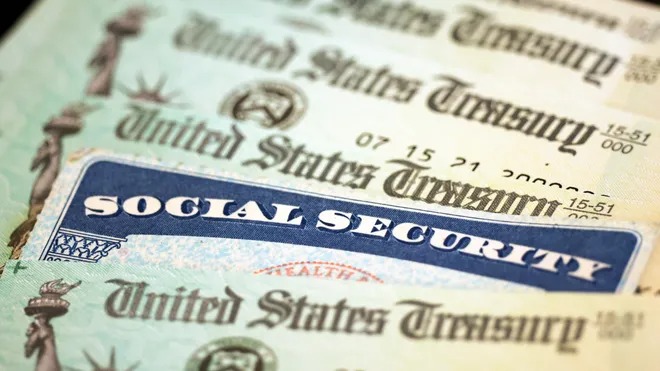In the beginning, the aims of Social Security were both noble and modest.
“We have tried to frame a law,” said President Franklin D. Roosevelt at the signing of the Social Security Act, “which will give some measure of protection to the average citizen and to his family against the loss of a job and against poverty-ridden old age.” It was Aug. 14, 1935.
The key phrase was “some measure of protection.” Social Security was never meant to be the principal source of retirement income for Americans — and yet, today, it’s pretty much all that tens of millions of people have. The following data from the Social Security Administration show just how dependent — sometimes utterly so — many Americans are on this most critical of programs:
- Social Security benefits represent about 31% of the income of people over age 65.
- Among beneficiaries age 65 and older, 39% of men and 44% of women receive 50% or more of their income from Social Security.
- Among beneficiaries age 65 and older, 12% of men and 15% of women rely on Social Security for 90% or more of their income.
Why are tens of millions of people in such a precarious position? For all the punditry about how we need to “fix Social Security” — we do, and I’ll get to that in a second — you rarely hear anyone talking about two other big reasons for our overdependence on it.
The first reason for our overdependence on Social Security is the fact that pensions have largely vanished. Companies have been doing away with these for years, washing their hands of any responsibility for their workers’ retirement. According to the federal Bureau of Labor Statistics just 15% of private-sector workers have access to a pension — a defined-benefit plan which provides guaranteed benefits based on age and length of service.
Of course, many companies in the private sector offer access to 401(k) plans for their employees. The bigger the company, the more likely this is. BLS data from 2023 show that 91% of firms with 500 or more workers offer such a plan, while 86% of firms with 100 to 500 workers do. But just 57% of private-sector firms with fewer than 100 workers extend this benefit to workers. The good news here is that many states have passed, or proposed, legislation to allow state-mandated retirement programs for small employers, often as an alternative to traditional 401(k) plans. This could bolster future retirement savings for millions of Americans.
So the vast majority of workers must fend for themselves with their 401(k) plans and individual retirement accounts. How’s that working out?
If you began working in, say, August 1982 — 43 years ago — you’re probably around 65 today. Back then, the S&P 500 stood at 102. It’s now 6,445 as of this writing, delivering returns that have beaten inflation by a wide margin. And yet, according to the most recent Federal Reserve estimate (in 2022), the median retirement savings for all American families was just $87,000. “Median” means that half have more than that amount, and half have less. How far do you think $87,000 will go?
Thus, for tens of millions of Americans, two legs of the “three-legged stool” of retirement — a pension and personal savings — basically don’t exist. That third leg, Social Security, is all they have. No wonder it’s under pressure.
Even though most financial advisers say it’s best to wait as long as you can before claiming benefits (each year you wait, your benefits increase about 8%), many folks go for the money as soon as they can — the earliest age is 62. If you had nothing — no pension, meager savings — what would you do?
If more people had pensions, if more had somehow been able to ride the incredible stock-market wave of the last four decades, Social Security might be under less pressure today. Yet, we are told, it’s Social Security that is broken and needs fixing.
Social Security is not broken. Since the first-ever check was issued — $22.54 to Ida May Fuller of Ludlow, Vt., on Jan. 31, 1940 — Social Security has faithfully kept its promise and met its obligations to generations of Americans. We can’t say the same of companies that have broken pension promises to workers, offshored jobs to save a few bucks and given their executives millions, while their employees struggle with rising healthcare costs and more.
Is Social Security perfect? Of course not. I’d be the last to argue that any government program that distributes $1.6 trillion to nearly 70 million Americans doesn’t have waste or inefficiencies. But, by and large, it’s pretty damn good — and, as FDR said, has given “some measure of protection to the average citizen and to his family against the loss of a job and against poverty-ridden old age.” Noble, indeed.
Yet we have to remember that, every so often, Social Security needs tweaking. This is one of those times. The program’s vaunted trust fund is projected to run out by 2033. If and when that happens, Social Security payments will be based only on whatever comes in from payroll taxes. The current math suggests that those taxes would cover 77% of benefits.
The needed adjustments are obvious and well known, but not without sacrifice. We could slowly raise the retirement age to reflect longer life spans. We could lift the cap on earnings that are subject to Social Security taxes (right now, workers pay taxes on the first $176,100; on earnings after that, not a cent). We could follow the example of other countries and allow a small portion of taxes to be invested in the stock market.
These tweaks could have been made years ago, but haven’t because the politicians — both Democrats and Republicans — that we keep sending to Washington can barely speak with one another, let alone get anything done.
That’s the real thing that needs fixing.
Source: msn

